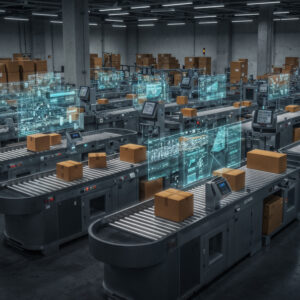Article by : QES (Thailand) Co., Ltd. & MEGA Tech Magazine
Users report that several features of most conventional ICP-OES spectrometers can cause considerable trouble and expense. The difficulties can often be traced to inherent weaknesses in the instruments’ design. In older instruments, these may contribute to clearly substandard results. Even in newer spectrometers, if they’re based on traditional technology, problems may persist. Overall, shortfalls most frequently result in downtime, lost productivity, lower sensitivity and stability, and a much higher cost of ownership. Fortunately, innovative engineering improvements have helped eliminate these bothersome spectroscopy headaches. Some next-generation systems surpass conventional designs to deliver consistent, rapid, accurate and considerably less expensive results.


Users may find that 4 reasons to upgrade to these next-generation ICP-OES is an intelligent choice.
1. Maximized operational uptime
Several traditional design elements can produce unsatisfactory levels of downtime for operation, maintenance, and repairs. To deal with high plasma-generated heat, conventional ICP-OES systems require users to add an external cooling system — typically a water-based chiller. This component adds unwelcome complexity to the overall system. It’s often prone to internal leaks. It can require frequent maintenance, and serve as a disproportionate source of system downtime.
By contrast, next-generation spectrometer technology eliminates the need to maintain a separate, water-based cooling system. SPECTRO provides the only spectrometer line currently available that integrates innovative, patented air-cooled technology*. This generates inherently less need than conventional designs for maintenance or downtime. It abolishes leaks and has proven less prone to breakdown.
Additionally, the line’s innovative technology includes a unique sealed optical system that eliminates the necessity for gas purging — and its attendant delays. Instead, the system is permanently argon-filled, recirculating gas through a small purifier cartridge. Conventional system generators usually require extended startups to attain stability. Further, than that SPECTRO offers the industry’s first ICP-OES model to utilize an ultrapowerful LDMOS generator. It achieves stability within 10 minutes of startup. And its robust, trouble-free, short-circuit-proof design provides superior uptime over the long term.


2. Optimized productivity and throughput
Conventional ICP-OES system generators may lack the power to deliver the higher levels of performance sometimes needed. In addition, the technology of some industry-standard ICP-OES instruments requires sequential processing of each element in a sample. Obviously, samples with relatively large numbers of different elements take more time. The resulting productivity losses may cause problems for contract laboratories and other organizations processing large volumes of such samples. New technologies have helped users achieve significant throughput gains. Example: a robust generator design — such as the 2000-watt model featured in some SPECTRO ICP-OES analyzers — provides ample power reserves. So it can adapt to fast-changing, even extreme plasma loads with unhindered productivity. Also, the technology used in the SPECTRO line surpasses conventional instruments’ sequential performance. It provides simultaneous spectrum capture in the 130-770 nm wavelength range, for the highest possible sample throughput. An industry-standard sequential spectrometer might process up to 140 samples a shift. But with its simultaneous design and powerful new generator, one SPECTRO model can analyze up to 320 samples in the same 8 hours.


3. Increased sensitivity and stability
Almost all ICP-OES analyzers still use conventional echelle-type optical systems. These instruments provide adequate performance in some analytical situations. However, in others, they may fall short of delivering satisfactory results. SPECTRO ICP-OES analyzers utilize a unique optics approach known as Optimized Rowland Circle Alignment (ORCA) technology. Echelle systems using charge-coupled device/charge injection device (CCD/ CID) technologies were developed in the 1990s, using two-dimensional sensors as their foundation. By contrast, the ORCA technique takes full advantage of linear array detectors. Unlike other approaches, SPECTRO systems are designed to minimize light loss, maximize light throughput, and reduce stray light. A SPECTRO analyzer’s optical system enables simultaneous capture of a sample’s relevant spectrum within 4 seconds. No-purge optics allow excellent long-term stability. And compared to echelle-based systems, upgrading to this technology delivers up to 5X greater sensitivity across a broader spectral range.

4. Lowest costs of ownership
Making a hefty addition to a conventional ICP-OES analyzer’s base price is the required purchase of a separate water-based chiller. This may add as much as $5,000 to total costs. The leaks to which such cooling systems are prone can also cause the failure of other costly instrument subsystems such as plasma RF generators or load coils. Repairs to any or all of these components carry considerable price tags, and can increase the chances of experiencing expensive downtime.
Besides these costs, conventional analyzers require constant expenditures for their consumable gas fill/purge cycles. And where this design leads to contamination of the optics by gas impurities, additional pricey downtime and repairs result. Innovations designed into each SPECTRO ICP-OES analyzer eliminate these problems, to achieve the lowest possible lifetime operating and consumables cost. There’s no need to buy and install a separate cooling system. Users also save the higher continuing energy costs of water-based chillers. And they avoid the risk of expensive early cooler replacement before the end of the analyzer’s service life
Additionally, SPECTRO analyzers’ unique sealed optical system eliminates conventional gas purging costs. With an estimated 600 cubic meters of purge gas saved per year, at current prices a user who upgrades to this technology may save $3800 annually in gas consumption alone.





